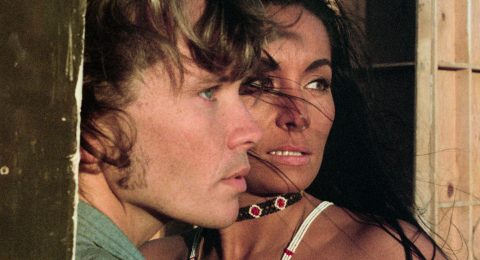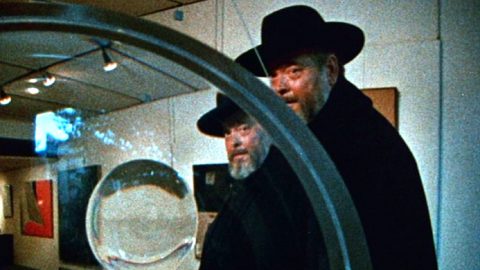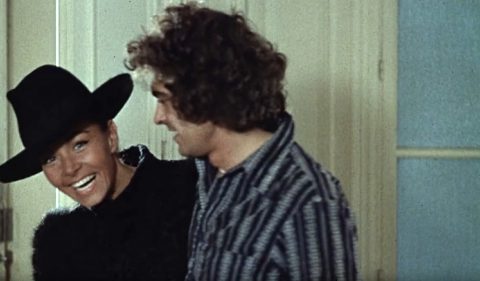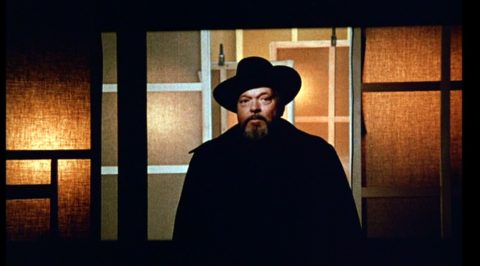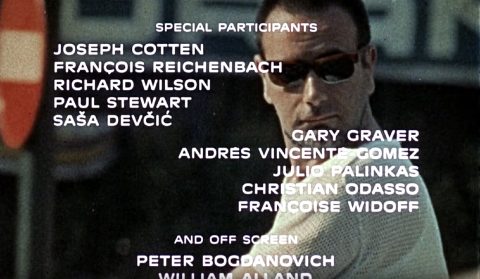the other side of the wind (TOSTW) appears at first glance to be an overly poetic and precious title – something thought up by f. scott fitzgerald during his tender is the night phase – but the title is a lie that is stated as a fact. there is no “other” side to the wind because natural phenomena do not have sides, their shape is in constant flux and the side depends on the viewer not the event.
the title appears to derive from a statement made by oja kodar, welles’ companion and partner in the screenplay and direction to TOSTW, who said at one point in their long relationship that “now she knew what was on the other side of the wind,” referring to Welles’ habit of wearing a cape that would blow dramatically in the wind – an unusual habit that he picked up in the world of theater, magic and variety shows in the second and third decades of the 20th century that informed his early life in new york and europe.
kodar meant it as a metaphor for having seen beyond the myth of the great artist to the man himself. the self-conscious lie, becoming an unresolved paradox, would be close to welles’ heart as in his previous film f is for fake (1973), (henceforth fake) he delved deeply into the nature of artistic creation, history, narrative, and the mediation and lying that informs them as they engage with the world.
in his acceptance speech to the academy of motion pictures arts and sciences in 1975 for a lifetime achievement award welles described himself as a small family shop in relation to large corporate entities, and that in an ideal world there should be room for both. that he got nowhere in his attempt at a truce with hollywood executives is a given for in a sense they were there not just to praise him but to bury him.
welles refused to lie down, and to add insult to injury he then harangued his powerful and wealthy audience for letting him hang in the wind without giving him a chance. to prove to them that he was still in the game welles showed them a clip from his new work in progress titled TOSTW.
while the work was politely received there were murmurs – clearly the scene was nothing remotely like his masterwork citizen kane (1941), (henceforth kane)– in fact it looked like nothing anyone had seen before and for that particular audience of moguls and stars that was not a good sign. there are few things more terrifying for a conservative audience to see than work that is brilliant and beyond their scope of understanding for it suggests that they are living in a fantasy bubble that has limited their understanding of contemporary reality and works that deal with it. what such an audience wanted was reassurance, and the smart “players” (their own term) in their circle, knew how to provide that kind of aesthetic concoction. welles was, from their point of view, now on the lunatic fringes of the hollywood community – an eccentric older uncle who made wine commercials for television to pay the bills – someone who had spent too much time in europe looking at art and something had gone wrong, some derangement of the senses had unhinged the mind that had made the best hollywood movie ever made at the age of 25. the genius was on the skids and there was nowhere to go but down – after a time there was even a book titled whatever happened to orson welles? …read the rest of the article by george porcari on cine action website. by uh
 a visual collective outlet of inspiration
a visual collective outlet of inspiration